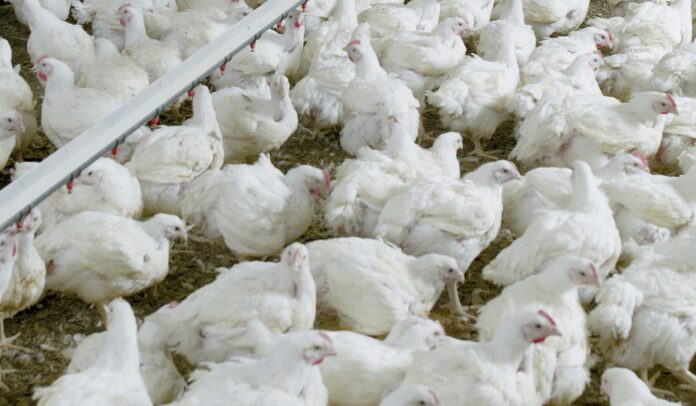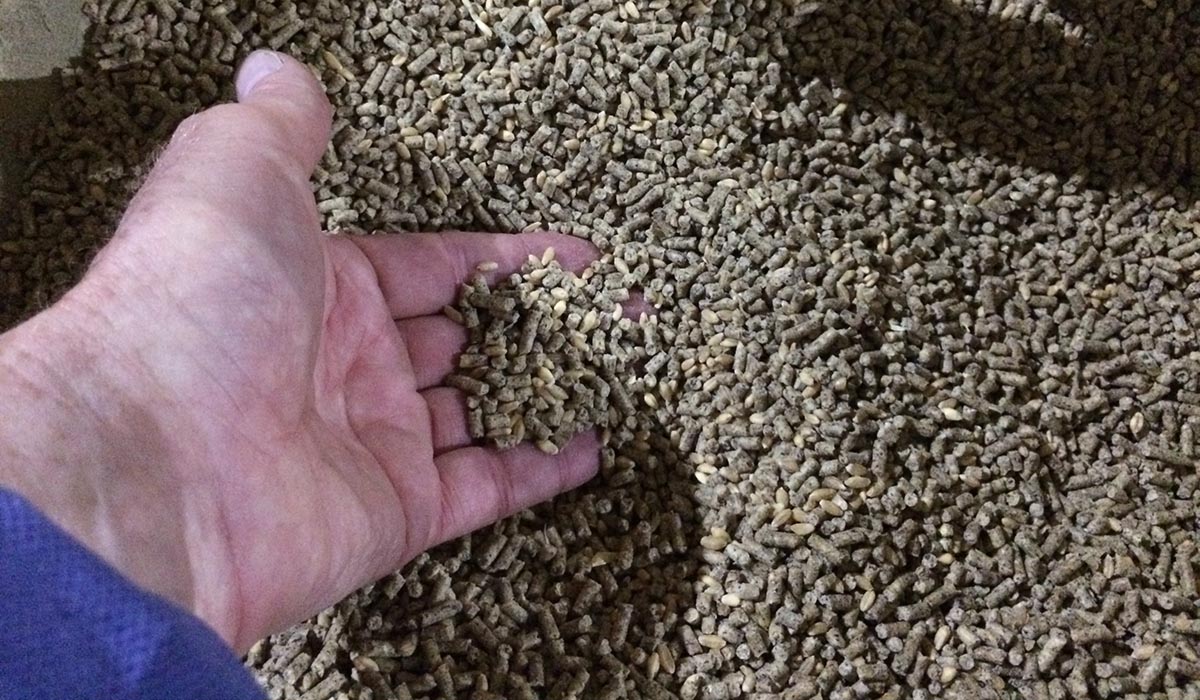
How innovative thinking and a proactive approach can ensure best practice with feed on broiler farms
In partnership with Cobb, this article examines best practice in broiler production, focusing specifically on feed management. How can better nutrition be promoted and fostered, without compromising profitability and adhering to best practice?
“Developing a best practice feed programme should prioritise the development of broilers in each stage of production,” says Edward Diehl, Nutritionist at Cobb Europe. “This can be achieved with the right combination of ingredients and nutrients. The next step is to ensure that this feed programme is cost-effective.”
The poultry industry’s gradual reduction in antibiotic usage has signalled a huge change in the way things are done. As businesses continue to innovate and adjust, one thing is clear: there is no singular catch-all solution that will replace antibiotics. Indeed, to look for one is actually the wrong approach.
Instead, argues Chloe Paine, Technical Manager at Trouw Nutrition, we must manage and handle multiple solutions simultaneously. At the heart of this is the issue of feed: “To ensure healthy support and growth for the bird, we can make use of numerous options,” says Chloe. “Developments in feed composition combined with other measures can support the bird’s biochemical processes, allowing them to grow – and grow well – without antibiotics.”
Good nutrition vs bad nutrition
How would we classify “good nutrition” in feed? At its heart, good nutrition should optimise production costs. Poor nutrition will ultimately undercut growth rates in cases of undersupply, which is well understood. Less widely known are the hidden costs of oversupply. Oversupplying nutrients risks requiring extra energy from the broiler and reducing efficiency – not to mention the extra expenditure from wasted feed. This also fosters problems in the long-term; surplus feed can promote bacteria growth and disease, affecting the bird’s health and growth rate.
“Ensuring a well-balanced diet is vital for good nutrition,” says Edward. “Everything from energy to amino acid ratios – all the way down to minerals and vitamins – needs to work together in order for the feed to do its job properly. Any imbalance can ultimately have a major impact on bird health or performance.”
“In an ideal world, we would be able to use technology to generate a bespoke diet for each bird each day according to its needs,” says Chloe. ”Practically, that is impossible. So, what can you do? Good nutrition is about looking at your processors requirement and setting your feeding programme accordingly. This can take in breed specifications, targets, etc. Each farm should be treated as individual, with a feed programme that maximises efficiency, taking into account the farm benchmark versus the overall goal.”
Chloe is also quick to highlight environmental stressors, from incubation to hatching and onwards, as key factors in the animal’s development. Indeed, science of the microbiome – particularly gut microbiota – is garnering more and more attention, even in its infancy. When measured, promoting healthy bacteria in the early stages of a bird’s life has significant beneficial results.
“In terms of feed conversion rates, we see a real difference,” says Chloe. “If you have better gut health, absorption of nutrients will be higher. It’s more efficient and efficiency should always be the priority for poultry producers.”
“Good nutrition is about knowing the bird, knowing what’s required for robust production, and then supplying it. The step before that is knowing your raw materials and measuring them. Feed is comprised of various materials from protein and cereal sources. We should understand and measure those sources properly in order to produce the right feed for the bird’s requirements.”

Precision nutrition
A quote that Chloe often cites comes from Lord Kelvin, perhaps the most important physicist of the 19th Century: “to measure is to know.” Precision nutrition is a different approach from formulating a feed based on the raw materials at hand, but instead measuring and analysing data regarding what’s happening on farm and using that information to create feed that will drive the required results. This will ultimately improve profitability in a way that simply targeting the best possible FCR will not.
“We should take an economic perspective,” says Chloe. “What is the farmer earning per kilo for his liveweight? What is the cost of wheat and barley? I don’t think you can formulate a feed programme in such basic terms anymore. We need to be more dynamic.”
A commercial nutritionist must account for breed specification, raw material availability, raw material cost, feed additive inclusion, physical properties, all balancing the physiological requirement of the bird. This means we don’t have a ‘’least-cost’’ formulation approach but an ‘’optimum-cost’’ approach. A way to manage this is to regularly simulate scenarios through a response model programme.
This model would be more reactive and able to implement the different circumstances of an individual farm/company. Factors can include breed differences right through to housing and what a farm is seeking to achieve. For example, are they paid by breast meat yield or whole carcass weight? A dynamic model takes this and more into account. It processes income against cost and uses that to produce a programme of nutrition and phase feeding that best fits a farm’s unique requirements.
“Opportunities exist for a more dynamic approach to feed,” says Chloe. Markets are volatile and what we define as the most profitable specification today can be different tomorrow. “Through innovation we can use modern technology to create a complex computer modelling programme. This can incorporate these variables and the reactions to any adjustment. For example, we might increase or reduce amino acid levels, and see how the bird’s growth rate responds to that. When trying to determine the most efficient trajectory between the cost of raw materials and the farmer actually receiving payment, precision nutrition is the answer. Simply adopting a diet with the highest possible density will not produce results that match a more sophisticated and targeted approach.”
The next step
The poultry industry has made great advances in recent years. “Nutrition is a dynamic field with constant developments and innovations,” adds Edward. “However, the next step might be to look back at the basics. We should not assume that the foundations we operate from are unchangeable or perfect.”
Innovation and optimisation of current practises is the most practical way to effect positive change; with more and more data being collected in agriculture, poultry businesses are faced with an opportunity to improve decision-making and drive greater profitability.
“Innovation and implementing these strategies will play more of a role in the near future,” adds Chloe. “Optimising performance and results at the farm level, while raising the bar for best practice, is a key concern when thinking about approaches to feed. In the future, we’ll likely see more and more businesses deriving greater efficiency from their birds via a more precise approach to feed and nutrition. Businesses with their eye on the horizon, who are willing to innovate, are set to gain the most.”

















